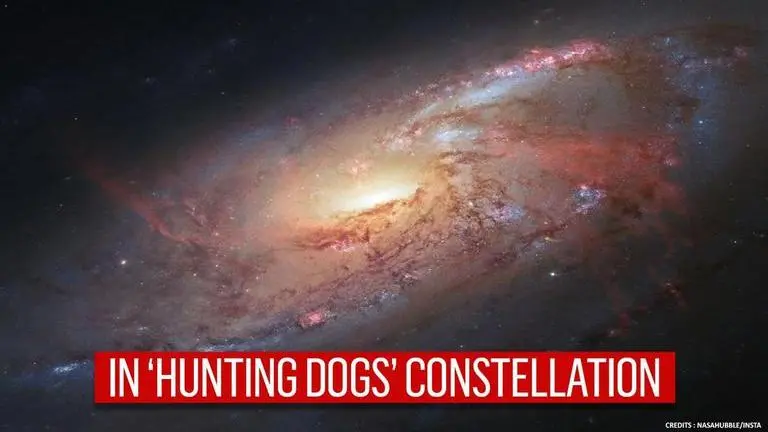Updated 18 November 2020 at 16:12 IST
Galaxy M106 has 'unusual set of spiral arms', NASA's image stuns internet
Galaxy M106 is located in the constellation Canes Venatici (the hunting dogs) at some distance from the Big Dipper in the Northern Sky, according to NASA
- Entertainment News
- 2 min read

On November 17, NASA shared a stunning image of the galaxy Messier 106 with its unusual set of spiral arms captured by Hubble. Taking to Instagram, the space agency informed that the iconic photograph was taken as a collaboration between Hubble and amateur astronomers combining observations from Hubble and from astrophotographers. Known as one of the nearer galaxies, M106, is located in the constellation Canes Venatici (the hunting dogs) at some distance from the Big Dipper in the Northern Sky, according to NASA’s Sky and Telescope.
The galaxy is dominated by blue spiral arms and red dust lanes near the nucleus, as featured in NASA’s image. Meanwhile, the core of the M106 can be seen illuminated brightly with radio waves and X-rays as the twin jets are seen running the length of the galaxy. “An unusual central glow makes M106 one of the closest examples of the Seyfert class of galaxies, where vast amounts of glowing gas are thought to be falling into a central massive black hole,” NASA explained in a release. The Seyfert galaxies are known to have low-luminosity of the phenomenon observed in quasars.
Advertisement
Black hole powers the nucleus
According to NASA, a massive black hole powers the nucleus of this galaxy and the UV continuum radiation causes the thermal emission of the heated gases that forms an accretion disk-like structure. Messier 106 lies at a distance of 23.7 million light-years and its ground-based image were taken by the amateur astronomer Robert Gendler. “Most spiral galaxies only have one pair of arms, but M106 has an extra set, seen here as red wisps of gas.
[A swirling disk of stars and gas, M106's appearance is dominated by blue spiral arms and red dust lanes near the nucleus. Credit: NASA]
Advertisement
''Unlike the other arms, these two extra arms are made up of hot gas rather than stars,” NASA revealed. Further, it added that the extra arm on M106 is the indirect result of the violent churning of matter around the black hole. The mystical galaxy was found by Charles Messier’s observing assistant, Pierre Méchain, in 1781 and the galaxy can best be observed on a telescope in the month of May.
Published By : Zaini Majeed
Published On: 18 November 2020 at 16:12 IST



